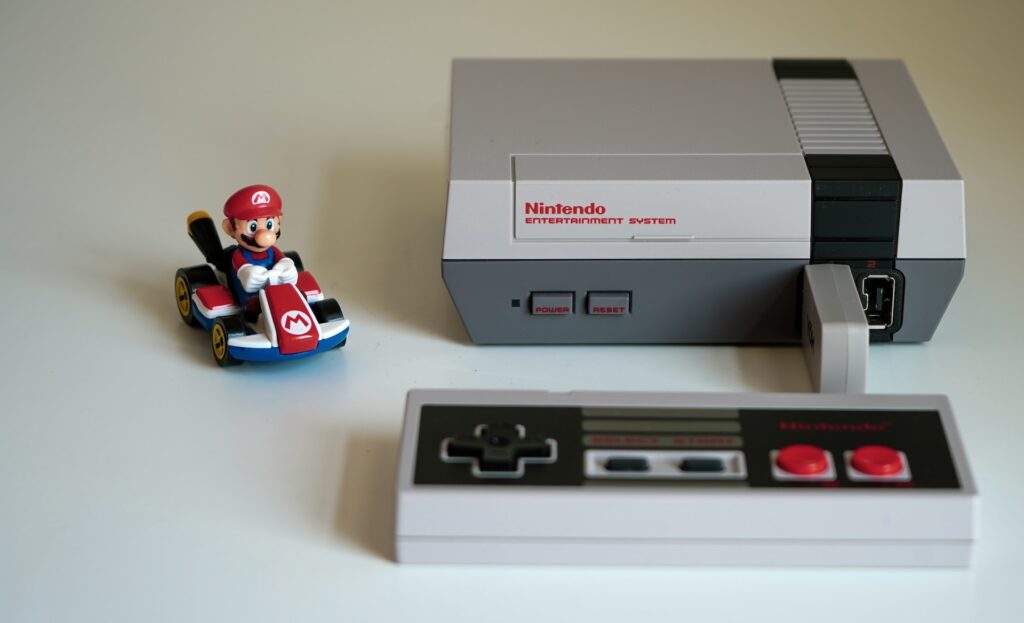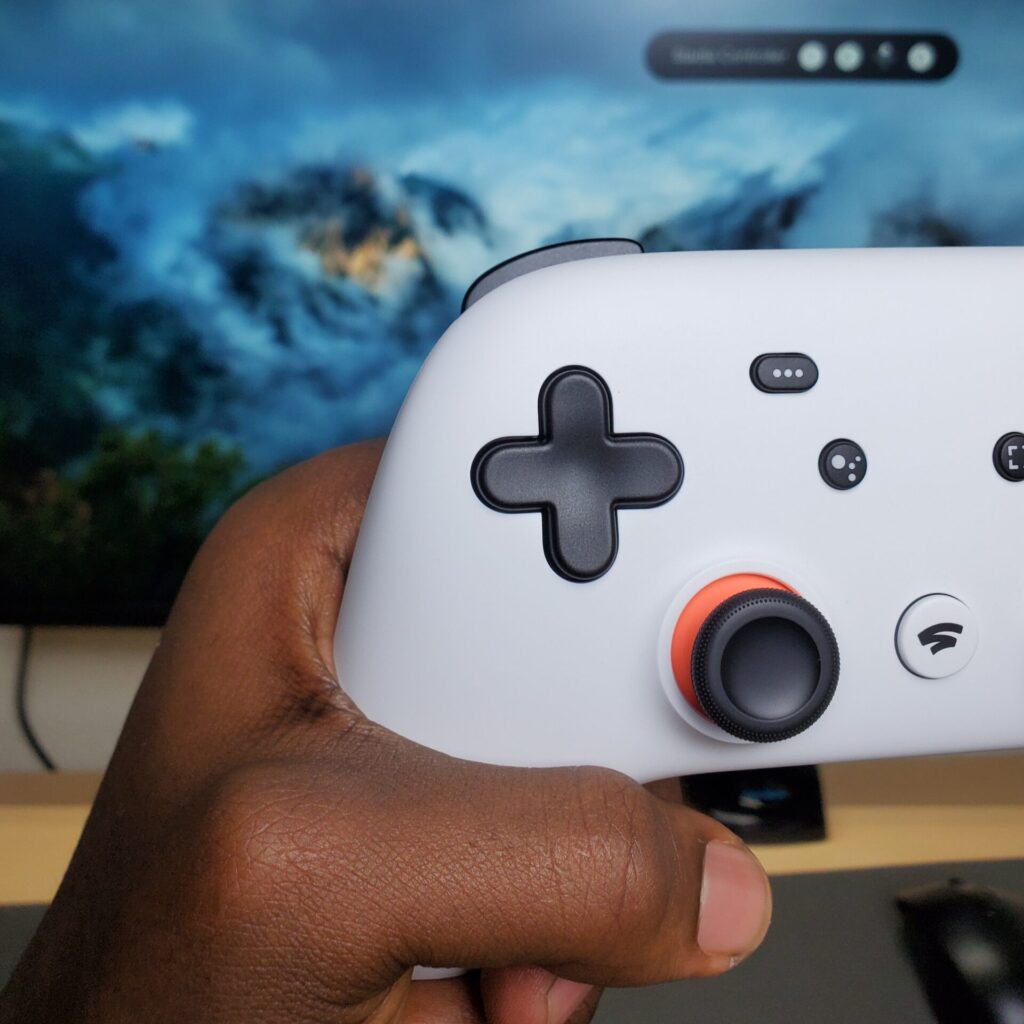Video games make up a sizable portion of the entertainment industry, generating over $300 billion annually in revenue, and it’s only getting bigger year after year. In this environment, revolutionary products, trends, and products pop up out of nowhere and sometimes fizzle out just as quickly.
One of these projects was the Stadia console, a project envisioned by Google to be the future of gaming. However, its story is not one triumph, but rather one of challenges and setbacks, leading to its inevitable demise, shutting down in early 2023.
In this article, we will attempt to explain what the Stadia console was, the issues it sought to solve, the niche it wanted to fill, and why it ultimately failed.
What was the Stadia console?
Debuted in late 2018, but only publicly launched a year later, Stadia was Google’s bold attempt to break into the gaming industry, promising a truly groundbreaking gaming experience. And it was!
To put it simply, the Stadia wasn’t a traditional console at all – in a world where gaming consoles are characterized by their physical presence, Google took a different approach: instead of having a device sitting under your wide-screen TV, Stadia was a game streaming service that relied on the power of the internet to deliver games directly to any of your supported devices (Chromium-based browsers, tablets running ChromeOS, Android devices, and a few other ones).
If you want a better idea of what Stadia was, you can think of it as the Netflix of gaming. You didn’t need to invest in expensive gaming hardware – all you needed was a fast, stable internet connection and a suitable device. The heavy lifting, which was rendering each frame smoothly with no hiccups, was done on Google’s data centers, and the game’s visuals and audio were directly streamed to your devices.
Stadia also boasted insane technical features, promising 4K resolution gaming at 60 frames per second on the heaviest games, which is similar to what top-notch gaming devices (especially computers) could provide. In addition, Google could leverage its large numbers of data centers scattered across the globe to deliver low-latency and high-performance gaming experiences to all gamers.
However, setting it apart from similar features at the time, Stadia had seamless integration with YouTube, another product owned by Google. Players could even record or stream their gameplay directly to the video-sharing platform without a proper setup.
Another interesting feature was the ability for players to share a save-state within a game. This allowed other players to launch an instance of the game through Stadia and start playing from the point at which the state was saved, which was amazing for games with branching narratives.
Ultimately, even with so many things going for it, Stadia failed to reel players in and keep them delighted.
So why did the Stadia console fail?
Well, there is a lot to unpack.
First, there was a high financial barrier to entry. While the promise of cloud gaming was alluring, players still needed to purchase games specifically for the Stadia platform. This meant that gamers who already had powerful gaming consoles or PCs at their disposal were reluctant to invest in a completely new library of games, and we all know how staying up-to-date with the latest releases can quickly get expensive – more so if you come from a poorer country.
After all, why would you buy a Stadia-specific game when you could play it on your existing console or computer?
Second, exclusive titles are often the driving force behind a gaming platform’s success, and Stadia fell short in this department. Almost all of its games were readily available on more famous and better-established platforms like the PlayStation, the Nintendo Switch, and the Xbox.

When players already had significantly invested in those platforms and had access to an extensive library of titles, coupled with the lack of exclusives, there was little incentive for gamers to make the switch to Stadia – or even give it a try.
Adding to the second point, Google had ambitious plans to develop its own first-party games, which would be exclusive to Stadia, but they fumbled after the company shut down its game development studios in early 2021. This not only left Stadia without the much-needed exclusive titles but also raised concerns about Google’s commitment to the platform.
On top of everything, there was a lack of effective marketing. As we all know, marketing and promotion play a pivotal role in the success of pretty much anything, and it’s no different within the video game industry. Google’s marketing efforts were lackluster after the initial hype – and the platform struggled to gain the visibility and attention it needed to compete with the established giants.
Finally, some hurdles further made gamers hesitant to make the switch:
- Stadia launched with a poor library comprising only 22 titles and the free tier was nowhere to be seen for a while;
- The controller, touted to work wirelessly, didn’t function like that for many months, requiring a USB-C cable to work until a patch was released;
- To deliver a seamless cloud gaming experience, a stable and fast internet connection is essential. As now all ISPs are made equal, this requirement excluded potential users with slow or unreliable internet connections, especially in places far away from urban environments.
All in all, the Stadia console faced multiple challenges and corporate setbacks, which compounded to hinder its potential success as a gaming platform. That said, the story of cloud gaming and game streaming doesn’t end here, as some companies have achieved what Google could only dream of.

What does cloud gaming look like now?
Let’s recap cloud gaming for a moment: often referred to as game streaming, the technology allows players to access and play video games over the internet without the need for gaming hardware like specific consoles.
The games are hosted on remote servers, and players can play them via a streaming service on their devices. In other words, it shifts the heavy lighting of rendering and processing frames from local devices to powerful data centers in the cloud infrastructure.
With cloud gaming, you can completely forget about the constant need for hardware upgrades, which can be a massive money sink for desktop gamers – you’ll always be playing on cutting-edge cloud-based infrastructure, which ensures a highly performant experience.
You also get almost instant access to many games as you don’t have to wait for games to download or update, which is especially a nuisance for many recent AAA titles and their whopping 60+ GB files. Additionally, it’s possible to enjoy high-quality gaming experiences on a wide range of devices, which is amazing for those who are constantly on the go.

However, it’s also important to note some of its disadvantages: despite advances in technology, cloud gaming still has some latency (input delay), which can negatively impact competitive and fast-paced gaming experiences.
As it requires a fast and reliable internet connection, cloud gaming can place a heavy burden on your internet connection, consuming massive amounts of data. This might raise eyebrows for users on limited internet plans, as exceeding those monthly data caps can lead to substantial fines.
Even so, some companies have hopped on the cloud gaming bandwagon and found success. For example, Nvidia’s GeForce Now has gained traction by allowing gamers to stream and play an array of PC games from their existing libraries, like Steam’s and Epic Games’s.
We can also mention Microsoft’s Xbox Game Pass, which seamlessly integrated cloud gaming with its Game Pass subscription model. It offers access to a vast library of games for a small monthly fee, making it an extremely cost-effective way for gaming enthusiasts to enjoy their hobby on PCs and Xbox consoles.
The Stadia console wasn’t meant to be
As seen throughout this article, the Stadia console was Google’s bold attempt to shake up the gaming world. By leveraging cloud technology and its massive data centers, Google wanted to create a Netflix-like service for games, which would eliminate the need for expensive gaming gear and would have seamless integration with YouTube.
Ultimately, for the reasons covered in this article, the Stadia console failed, but its failure paved the way for other alternatives in the cloud gaming niche, like Nvidia’s GeForce Now and Microsoft’s Xbox Game Pass.
Are you a passionate creator or a company looking to turn your gaming vision into reality? At Main Leaf, we’re not just another player in the industry: we’re the game changers! With over 70 experts covering all specialties of game development, we’re here to bring your gaming dreams to life with our solutions perfectly tailored to your needs.
Whether you’re stepping into the world of Unity or Unreal Engine or need last-minute outsourcing solutions for your project, we’ve got you covered with our experience spanning over a decade.
To get started with Main Leaf, shoot us a message by filling out the form below, and we’ll get back to you within 24 hours.

